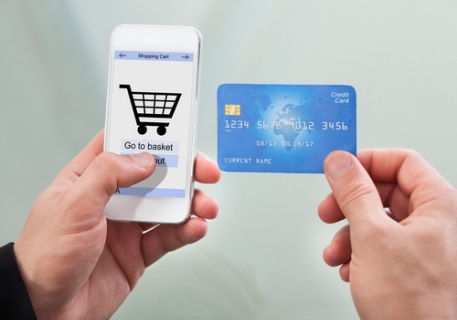EMV Or Mobile: It’s a Risk Vs. Rewards Choice

As merchants consider their options leading up to next year’s EMV liability-shift deadline, they are faced with the choice of upgrading their POS equipment, or wait and risk the fraud consequences while using the money to promote mobile-based initiatives. Their risk, however, also lies in whether their mobile-based solution can succeed as well as Starbucks’ has. Thus far, few have.
Decisions, decisions. You’re a small merchant facing an October 2015 deadline when, if you’re unable to accept a presented EMV smart card, you become liable for any subsequent counterfeit fraud initiated with the card. But what are the chances of that happening?
The U.S. appears to be in a transitional period between payment technologies, with traditional magnetic stripe cards facing extinction and mobile payments viewed as the eventual replacement. Some view EMV smart cards, in use in some other countries for three decades, as simply filling a security hole during the market transition to a more-modern mobile-based solution. If that is the case, is converting to EMV really necessary, at least right away?
Some merchants are saying no, it’s not. Though they eventually plan to embrace EMV when the time is better for them.
Orange Leaf Frozen Yogurt, which operates 315 stores, for example, reportedly plans to wait and phase in EMV as its existing payment terminals wear out, say over four to seven years. Meantime, it will place the marketing emphasis on its mobile-payment app, which ties to a customer-loyalty program.
“Using a mobile wallet is a better choice right now,” Michael Christy, Orange Leaf’s director of information technology, said in a Bloomberg report. “We can control that, and the technical requirements are minimal. We want to make sure we save our franchisees money.”
However, Orange Leaf’s risks rest not just with ignoring EMV liability, but also in failing to produce results from its mobile initiative. Few merchants other than Starbucks have demonstrated gains from their mobile initiatives, and it appears only certain types of merchants may do so. Having many regularly returning visitors seems to be a prerequisite, so perhaps Orange Leaf might have a good shot.
While the tactic Orange Leaf is taking may not equate to Russian Roulette, eventually crooks will shift their attention to the smaller merchants as they look for the most likely security holes in the payment system. That may not happen right away, however, as the big potential thefts will come from attacking the larger merchants and ATM vendors that fall behind and remain vulnerable while their competitors comply with the EMV mandates.
Larger merchants may be able to better cover their losses, however, whereas smaller ones will be especially vulnerable financially should they be targeted for counterfeit fraud.
In a recent commentary, Market Platform Dynamics CEO Karen Webster noted the potential irony should small merchants, “the long tail in all of this,” and a subset of large merchants that drive a collective majority of spend end up being the first-movers in mobile payments and ditch EMV entirely for mobile apps that enable lots more than payment. Instead, they would rely on the cloud and tokenization to protect cardholder data and plow the money they’d spend on EMV upgrades into incentives to get consumers to adopt.
The may be a bit idealistic, but crazier things have happened, as the column suggests. Cards aren’t going away any time soon, however. But what consumers and merchants will find with EMV is that contact smart card transactions take more time to conduct that mag-stripe ones. Subsequently, there may be a push for a faster alternative, especially among merchants wanting to keep their customer lines small, and consumers not wanting to be in lines in the first place.
That’s where mobile-based alternatives likely will find the most traction. How quickly folks want their kiwi frozen yogurt may play a central role in whether Orange Leaf’s mobile push thrives.
